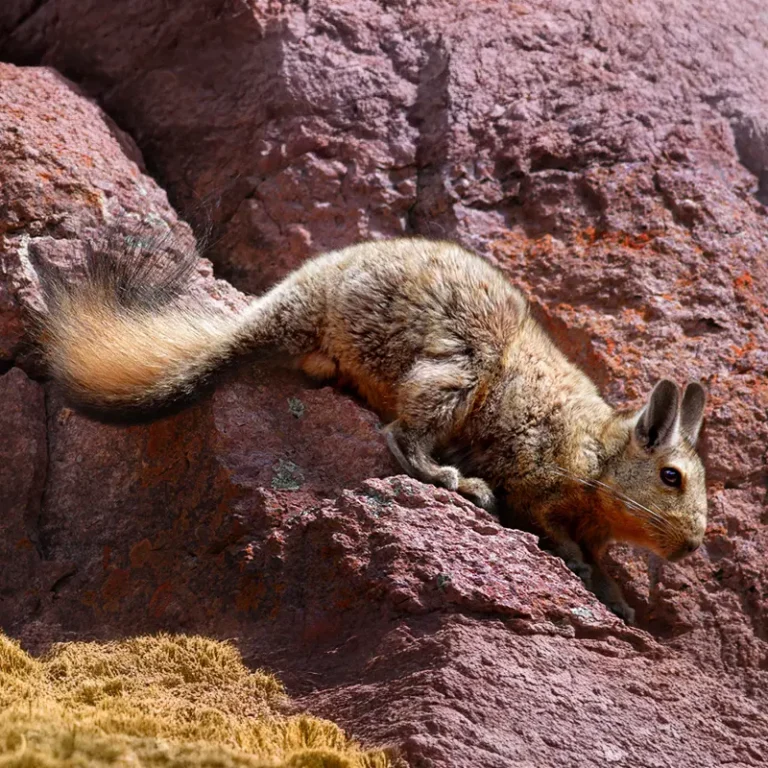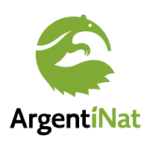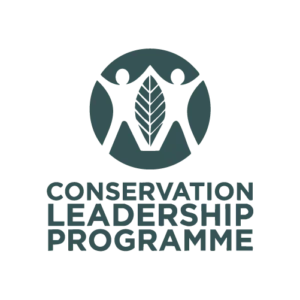Context and objectives
High in the walls and rocky areas of southern Patagonia lives a large and elegant rodent of which we know almost nothing: the Wolfsohn’s Viscacha. Exclusive to southern Argentina and Chile, it belongs to the same family as the famous viscachas of the central Andes, but its life in the inhospitable landscapes of the south has kept it hidden and little studied. It lives in small groups, among the walls of the plateaus of Santa Cruz, from Lake Buenos Aires to the extreme south. Despite its uniqueness, we know very little about its biology, ecology, or distribution, and that represents a problem: we cannot conserve what we do not know. Its habitat is under pressure from overgrazing by livestock, the expansion of exotic species such as the European hare, and the effects of climate change, which could profoundly alter the vegetation on which it depends. Recent studies show that this group of rodents has very low dispersal capacity and high isolation between populations. This implies that each group may be functioning as an independent unit, and that the loss of one of them could mean a local extinction without replacement. Therefore, identifying conservation units, knowing their evolutionary history and their response to environmental changes is key to planning their management. Globally and nationally, the Wolfsohn’s Viscacha is categorized as “insufficiently known,” a label that, more than a definition, is an alert. An alert that we lack basic information to protect it. Our work seeks to reverse that: generate the knowledge necessary to assess its conservation status, propose concrete management strategies, and give this emblematic species of southern Patagonia the attention it deserves.
Our actions
- Distribution and population survey. We seek to know exactly in which areas of Patagonia this species still lives and how many individuals remain, comparing the current situation with what is known from the past.
- Genetic studies to understand their isolation and connectivity. We analyze the DNA of different individuals to understand if there are isolated populations or if there are natural areas that facilitate their movement and connection.
- Monitoring of colonies and their movements. We study how they group in colonies, what characteristics their habitat has, and how they connect between different areas of the landscape.
- Relationship between the environment and the presence of the species. We investigate what environmental conditions (such as orientation to the sun, wind, or the shape of rocky walls) make the presence and size of a colony more likely.
- Modeling future scenarios. With the data obtained, we develop models to project how their distribution could change in the face of different climatic scenarios. This allows us to anticipate threats and prepare to respond.
- Proposal of conservation measures. Based on all this information, we work on the development of concrete management and conservation proposals, including their inclusion in threat categories, both nationally and internationally.
Protagonists
Habitat and behavior
Wolfsohn’s Viscachas live in groups called colonies, whose composition and social organization are unknown. They live exclusively on walls and rocky areas of southern Patagonia (Argentina and Chile). They are very good climbers and seek refuge among the cracks and rocky cavities.
Feeding
Wolfsohn’s Viscacha feed only on vegetables. We observed them eating coirón, lichens, leaves and flowers of shrubs but also calafate fruits.
Reproduction
Very little is known about the reproduction of the species so we are studying this aspect of its biology carefully. It seems that females give birth to only one young per year and lactation lasts several months.
Curiosity
While they can be observed during the day, Wolfsohn’s Viscacha are mainly nocturnal. They can emit a very loud chirp when they detect danger which serves as a warning to all members of the colony who immediately climb the steepest walls to seek shelter.
Threats
Little is known about the threats to the species; this is one of the topics investigated by the Hooded Grebe Foundation. One of the known threats is hunting.






